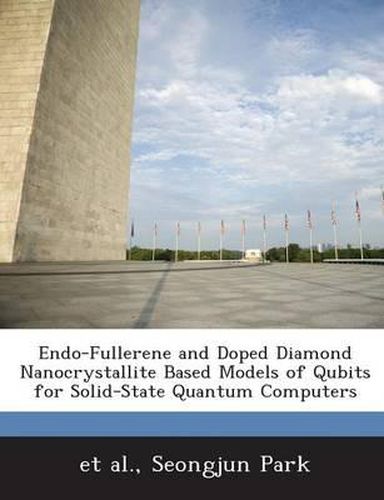Readings Newsletter
Become a Readings Member to make your shopping experience even easier.
Sign in or sign up for free!
You’re not far away from qualifying for FREE standard shipping within Australia
You’ve qualified for FREE standard shipping within Australia
The cart is loading…






Models of encapsulated ½ nuclear spin H-1 and P-31 atoms in fullerene and diamond nanocrystallite, respectively, are proposed and examined with ab-initio local density functional method for possible applications as single quantum bits (qubits) in solid-state quantum computers. A H-1 atom encapsulated in a fully deuterated fullerene, C(sub 20)D(sub 20), forms the first model system and ab-initio calculation shows that H-1 atom is stable in atomic state at the center of the fullerene with a barrier of about 1 eV to escape. A P-31 atom positioned at the center of a diamond nanocrystallite is the second model system, and 3 1P atom is found to be stable at the substitutional site relative to interstitial sites by 15 eV, Vacancy formation energy is 6 eV in diamond so that substitutional P-31 atom will be stable against diffusion during the formation mechanisms within the nanocrystallite. The coupling between the nuclear spin and weakly bound (valance) donor electron coupling in both systems is found to be suitable for single qubit applications, where as the spatial distributions of (valance) donor electron wave functions are found to be preferentially spread along certain lattice directions facilitating two or more qubit applications. The feasibility of the fabrication pathways for both model solid-state qubit systems within practical quantum computers is discussed with in the context of our proposed solid-state qubits.
$9.00 standard shipping within Australia
FREE standard shipping within Australia for orders over $100.00
Express & International shipping calculated at checkout
Models of encapsulated ½ nuclear spin H-1 and P-31 atoms in fullerene and diamond nanocrystallite, respectively, are proposed and examined with ab-initio local density functional method for possible applications as single quantum bits (qubits) in solid-state quantum computers. A H-1 atom encapsulated in a fully deuterated fullerene, C(sub 20)D(sub 20), forms the first model system and ab-initio calculation shows that H-1 atom is stable in atomic state at the center of the fullerene with a barrier of about 1 eV to escape. A P-31 atom positioned at the center of a diamond nanocrystallite is the second model system, and 3 1P atom is found to be stable at the substitutional site relative to interstitial sites by 15 eV, Vacancy formation energy is 6 eV in diamond so that substitutional P-31 atom will be stable against diffusion during the formation mechanisms within the nanocrystallite. The coupling between the nuclear spin and weakly bound (valance) donor electron coupling in both systems is found to be suitable for single qubit applications, where as the spatial distributions of (valance) donor electron wave functions are found to be preferentially spread along certain lattice directions facilitating two or more qubit applications. The feasibility of the fabrication pathways for both model solid-state qubit systems within practical quantum computers is discussed with in the context of our proposed solid-state qubits.